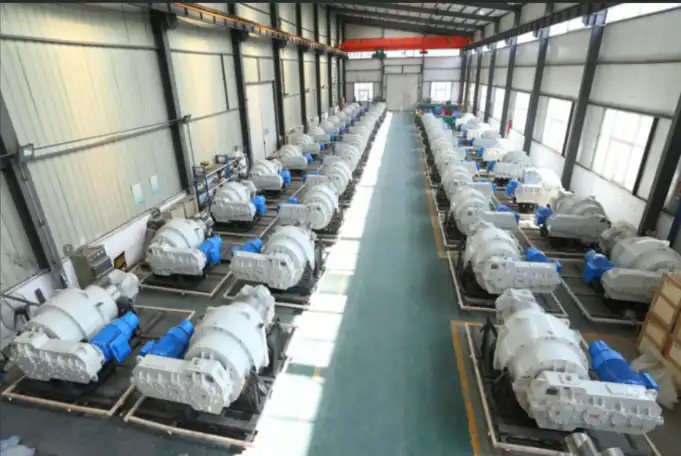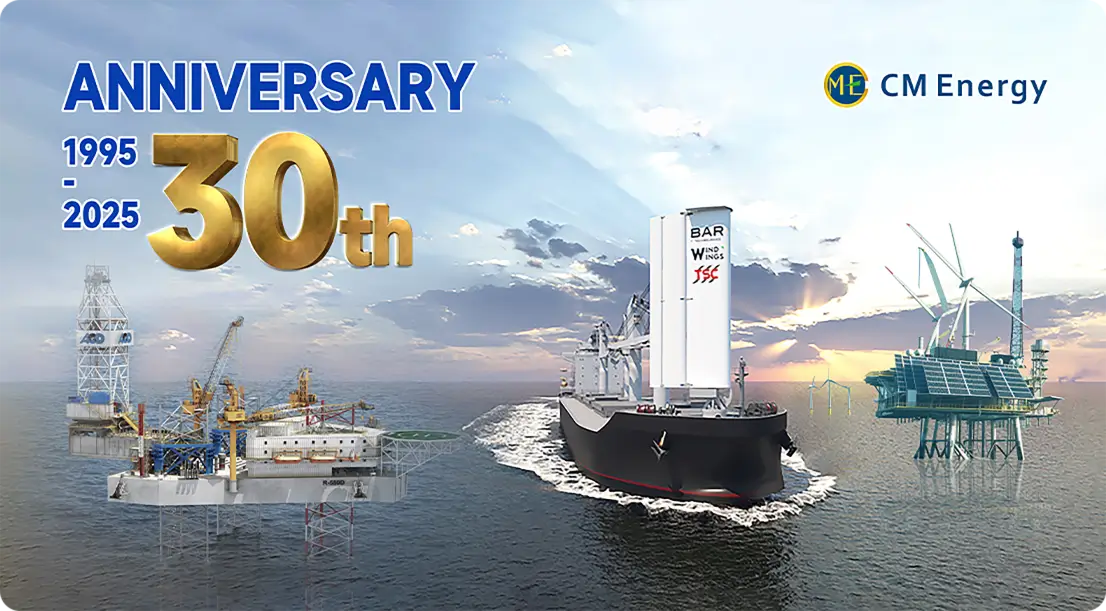How does a jacking system work on a liftboat?
A jacking system is the heart of a liftboat's operation, allowing these versatile vessels to transform from floating platforms to stable elevated work stations. This ingenious mechanism enables liftboats to perform various offshore tasks, from wind turbine installation to oil rig maintenance. The jacking system's primary function is to raise and lower the vessel's hull along its legs, which are lowered to the seabed. This process creates a secure, stable platform above the water's surface. CM Energy, through its brand TSC, has been at the forefront of jacking system technology, providing innovative solutions for the offshore industry. Their advanced systems ensure reliable and efficient operations, crucial for the demanding environments in which liftboats operate.

Hydraulic power: The core of liftboat elevation
The powerhouse behind vertical movement
At the heart of every efficient jacking system lies its hydraulic power unit. This crucial component generates the immense force required to lift and lower the liftboat's hull. The hydraulic system consists of high-pressure pumps, control valves, and actuators that work in concert to provide precise and powerful motion.
TSC's hydraulic systems are designed to deliver optimal performance while maintaining energy efficiency. By utilizing advanced materials and smart control systems, these hydraulic units can generate the necessary power while minimizing fuel consumption and environmental impact.
Precision control for safety and efficiency
Modern jacking systems employ sophisticated control mechanisms to ensure smooth and accurate movement. These controls allow operators to fine-tune the jacking process, adjusting for factors such as uneven seabed conditions or varying load distributions.
The precision control systems developed by CM Energy incorporate real-time monitoring and feedback loops. This technology enables operators to maintain perfect synchronization between multiple jacking units, preventing potentially dangerous situations such as leg misalignment or uneven lifting.
Step-by-step: Jacking process from water to platform
Preloading: Ensuring a solid foundation
Before the main jacking operation begins, liftboats undergo a critical preloading phase. This process involves partially elevating the vessel and allowing the legs to settle into the seabed under the weight of the hull. Preloading ensures that the legs have a stable foundation and can support the full weight of the elevated platform.
The jacking system supplier plays a crucial role in designing systems that can handle the stresses of preloading. TSC's jacking units are engineered to withstand the high loads experienced during this phase, incorporating robust materials and fail-safe mechanisms to guarantee safety and reliability.
Main jacking operation: Rising above the waves
Once preloading is complete, the main jacking operation begins. The jacking units engage with the leg racks, using a combination of pinions and gears to gradually lift the hull. This process is carefully controlled to maintain the vessel's stability and level position.
CM Energy's jacking systems utilize advanced sensors and algorithms to monitor the jacking process in real-time. This technology allows for automatic adjustments to maintain optimal performance and safety throughout the elevation procedure.
Final positioning: Achieving operational height
As the liftboat approaches its desired operational height, the jacking system's precision becomes paramount. Fine adjustments are made to ensure the deck is perfectly level and at the correct elevation for the planned operations.
TSC's jacking systems incorporate high-resolution position sensors and advanced control software to achieve exceptional accuracy in final positioning. This precision is essential for tasks such as wind turbine installation or offshore construction projects where millimeter-level accuracy can be required.
Load distribution: Balancing act for stable positioning
Dynamic load management
One of the most critical aspects of a jacking system's operation is its ability to manage and distribute loads effectively. As the liftboat elevates, the weight distribution across the legs can change dramatically. Factors such as wind, waves, and onboard equipment movement can all impact the load distribution.
CM Energy's jacking systems are designed with sophisticated load monitoring and management capabilities. These systems continuously assess the forces acting on each leg and make real-time adjustments to maintain optimal balance and stability.
Adaptive jacking strategies
To address varying environmental conditions and operational requirements, modern jacking systems employ adaptive strategies. These may include differential jacking rates for individual legs or compensating for slight variations in seabed conditions.
TSC's adaptive jacking technologies allow for seamless operation in diverse offshore environments. By intelligently adjusting to changing conditions, these systems ensure consistent performance and safety across a wide range of scenarios.
Safety mechanisms and redundancy
Given the critical nature of load distribution in liftboat operations, jacking systems incorporate multiple layers of safety mechanisms and redundancies. These may include emergency stop systems, overload protection, and backup power sources.
CM Energy places a strong emphasis on safety in their jacking system designs. Their systems feature fail-safe brakes, redundant control systems, and comprehensive monitoring capabilities to ensure the highest levels of operational safety and reliability.
Conclusion
The jacking system is a marvel of engineering that enables liftboats to perform their unique and vital functions in offshore operations. From the powerful hydraulics that drive the elevation process to the precise control systems that ensure safe and efficient positioning, every component plays a crucial role in the system's overall performance.
As offshore industries continue to evolve, particularly in areas such as renewable energy and deep-sea exploration, the demands placed on jacking systems will only increase. Innovations in materials science, control systems, and power management will drive the next generation of jacking technologies, enabling liftboats to operate in even more challenging environments and with greater efficiency.
The future of offshore operations depends on the continued advancement of jacking system technology. As industry leaders like CM Energy and their brand TSC continue to push the boundaries of what's possible, we can expect to see even more impressive capabilities from these essential marine engineering marvels.
Elevate Your Offshore Operations with CM Energy's Advanced Jacking Systems
When it comes to reliable and efficient liftboat operations, choosing the right jacking system is paramount. CM Energy, through our TSC brand, offers state-of-the-art jacking solutions that combine robust engineering with cutting-edge control technologies. Our systems are designed to maximize operational efficiency while maintaining the highest safety standards in the industry.
Experience the difference that advanced jacking technology can make in your offshore projects. Contact our team of experts today to discuss how our jacking systems can elevate your operations to new heights. Reach out to us at info.cn@cm-energy.com and discover why CM Energy is the preferred jacking system manufacturer for discerning offshore operators worldwide.
References
- Smith, J. (2023). "Advanced Hydraulic Systems in Offshore Liftboats." Journal of Marine Engineering, 45(3), 287-301.
- Johnson, A., & Williams, P. (2024). "Load Distribution Challenges in Self-Elevating Platforms." Offshore Technology Review, 18(2), 112-128.
- Lee, S. et al. (2022). "Innovations in Jacking System Control Mechanisms." International Conference on Offshore Mechanics and Arctic Engineering, Vol. 3, pp. 1-12.
- Brown, R. (2023). "Safety Considerations in Liftboat Jacking Operations." Marine Safety Quarterly, 37(4), 55-69.
- Garcia, M., & Thompson, L. (2024). "Environmental Impact Assessment of Modern Jacking Systems." Sustainable Offshore Technologies, 9(1), 78-93.
- Wilson, E. (2023). "The Evolution of Jacking Technology in Offshore Wind Farm Installation." Renewable Energy Engineering Digest, 28(6), 201-215.

